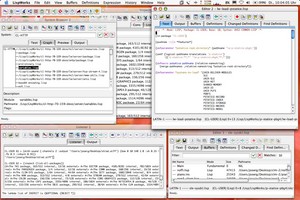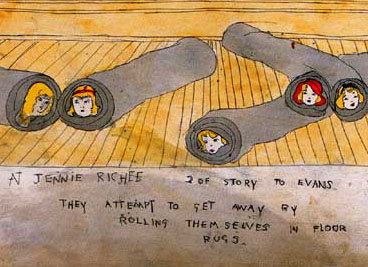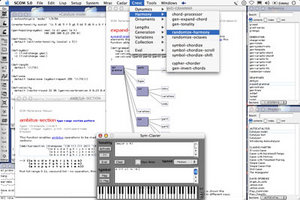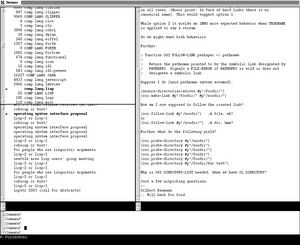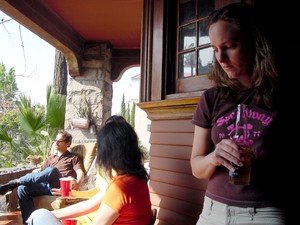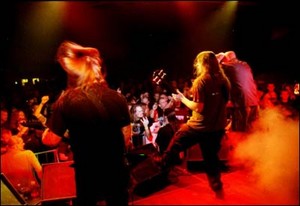June 30, 2003
Lispworks 4.3 for OS X
Xanalys announced the release of Lispworks 4.3 for OS X.
As of June 30th, 2003, LispWorks for Macintosh is available as a Professional Edition at $999 and Enterprise Edition at $2,999. The Enterprise Edition includes Common SQL, LispWorks ORB and KnowledgeWorks. Support and Maintenance packages are also available.
LispWorks for Macintosh supports:
- native Mac OS X GUI with Aqua look and feel through Cocoa, and
- the X11/Motif-based GUI familiar to users of LispWorks for Unix and LispWorks for Linux
There's no mention of this anywhere on lispworks.com. Shocking.
Rainer Joswig sent a screenshot:
Wow, that looks nice.
He says “The fun thing is that it can be used natively on the Mac with the Cocoa/Aqua-Interface - and the same IDE can also be used under X11/Motif. And it can be used via the command shell.”
Packages for Idiots
Erann Gat has put up the first draft of “The Complete Idiot's Guide to Common Lisp Packages” (the c.l.l thread). “I'm interested in getting feedback both from newbies (is it understandable?) as well as experienced Lispers (is it correct?)” [via gavin].
June 29, 2003
Associazione Lisp User Italiani
Has lispmachine.org always been a lisp news/weblog site? (translated.)
June 28, 2003
Porn2Party
I went to this Playboy sorta party last night. Of course there were remarkable breasts in attendance (friend to actress: “I know your boobs like the back of my hand.”--she edits videos for Playboy), but the two things that stuck with me afterward were (i) dance music can be good and (ii) LA has room for pretty much every little niche subculture and you're free to be whatever kind of character you want, and yet there must be 30,000 guys here that all dress like Axl Rose.
DUMMY
I went to this Playboy sorta party last night. Of course there were remarkable breasts in attendance (friend to actress: “I know your boobs like the back of my hand.”--she edits videos for Playboy), but the two things that stuck with me afterward were (i) dance music can be good and (ii) LA has room for pretty much every little niche subculture and you're free to be whatever kind of character you want, and yet there must be 30,000 guys here that all dress like Axl Rose.
Symbolic Composer
Rainer Joswig noted this application from MRAC Publishing:
Symbolic Composer 5.0 is the most powerful music molecular language available for computers, and it also includes the MCL Common Lisp interpreter that lets you extend and customize the composition functionalities. Symbolic Composer 5.0 totals over 1000 music algorithms, suitable for modern, dance, classic, electronic, ambient and experimental styles.
The tonality system covers 300 microtonal world-music and theoretical scales, and all chords and scales used in the last 500 years of music history. Besides providing the composer a toolbox of traditional composition tools Symbolic Composer also enables the composer to explore advanced fractal and chaos mathematics to determine compositional elements.
June 27, 2003
June 26, 2003
Bee Attack
On Monday, the bees almost got me.
Some robot-programming colleagues and I were returning to work after taking a little stroll through old town Pasadena when we noticed a whole bunch of bees flying around the tree a few feet from the front door to the building.
The afternoon group stroll is an eagerly awaited part of my daily routine. Seeing bees is, at best, an opportunity to think “Wow, I am so much better with this debilitating bee phobia than I used to be.”
When we got closer, we saw that a swarm of bees had settled in the tree.
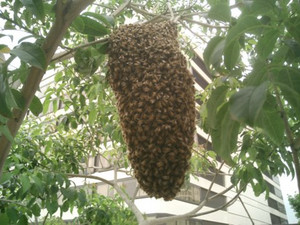
swarm of killer bees. photo by luis.
We fled to the relative safety of the indoors.
From: Xxxxx Xxxxxxxx <xxxx@idealab> Subject: [allpas] Bees In The Vicinity All, Please do not leave by the front doors today -- there is a swarm of bees building a hive on the tree between our 2 exit doors on Union St. We have called the pest control people but they will not arrive until 5pm so be very cautious when you leave and avoid going near the front of the building.
OK, so now our refuge had become a potential tomb. But whatever, I wasn't looking for any trouble.
qxxxxxjxx: Now on the news they're saying there's a swarm at a school.
It's one thing to sit tight and wait for the pros to handle a bunch of killer bees taking a little rest in the tree outside (I was willing to believe that killer bees get tired, too), but it had become clear this was a coordinated attack. It was time to take the initiative.
Which we did. Obviously I can't get into the details of the beyond-cutting-edge robot defensive software and matching only-occasionally-lethal offensive hardware we recklessly modified over the course of the next hour to create a vision of autonomous bee-reaping fury straight out of the darkest half-forgotten africanized honey bee mythologies. But I can say that the goal was not just to coldly and with ruthless machine efficiency 'terminate' the insects that dared mess with us, but to send a message. A message of species superiority, of pain, and especially dismemberment.
At 5 o'clock when the pest control guy arrived, there was nothing left for him to do but dispose of the crushed, gleaming carapaces littering the sidewalk.
June 25, 2003
ACL Prompt
Franz, in an effort to help expose more people to Lisp, has put up an online interactive lisp prompt. You can access it via telnet or a little java applet.
Lisa Fettner of Franz says
Although it's still in a pretty rough form -- it's not a full blown version (there's no editor or IDE) -- users can try out different coding exercises to help them get a feel for how Lisp works, without having to download or install any software.
Franz would like your feedback on the prompt. Feel free to leave comments here.
June 24, 2003
ELI for SBCL
David Lichteblau has an implementation of Franz' Emacs-Lisp-Interface (ELI) for SBCL: http://www.rz.fhtw-berlin.de/~lichtebl/lep.tar.gz
ELI is like ilisp, but a lot better (two way communication between lisp and emacs, support for threads, rarely gets confused, and more).
(A while back, Douglas Crosher wrote some support for ELI for CMUCL.)
June 23, 2003
lisp-p.org
I'm not sure if this means that Gene Michael Stover is done with “The Lisp Magazine at lisp-p.org” (formerly Yadda Lambda), or not: “I've kept the www.lisp-p.org domain name, though I might ditch it in a year or two.”
In any case, here are a few lisp-oriented articles I hadn't seen before:
June 22, 2003
DUMMY
Richard Gabriel has a sort-of weblog at java.net. His article “A Vision for java.net” is interesting, at least to my not-that-knowledgeable-about-but-interested-in-communities mind.
A Richard Gabriel Weblog
Richard Gabriel has a sort-of weblog at java.net. His article “A Vision for java.net” is interesting, at least to my not-that-knowledgeable-about-but-interested-in-communities mind.
June 21, 2003
Rayon
I saw Saturday Looks Good to Me last night at Spaceland. Pretty disappointing, though apparently their touring lineup isn't their strongest. The Caesars were unexciting (allmusic says “There is just nothing happening here that anyone needs to hear”).
Rayon, on the other hand, was a nice surprise; pretty good and fun to watch.
Then I watched 5 episodes of Fishing with John. Again.
Catching Up Pt. 2
You knew that wasn't two full months worth of comp.lang.lisp posts, right?
Nikodemus Siivola (again) pointed to a lisp-informed article on kuro5hin about C++ templates.
I never heard of Bookfix, but Edi Weitz noticed they're publishing David Lamkins' book, Successful Lisp. (In the pipeline there's also Peter Seibel's book, with the working title Practical Common Lisp. And maybe more.)
Gilbert Baumann made the first usenet posting ever from a McCLIM-using app. “I use a news reader called 'Hermes' which was appearently written by Peter Clitherow in the years 1988 til 1992 supposed to run under CLIM-1 and Genera.”
Bill Clementson posted a summary of the 3rd Denver area lisp users group meeting:
We saw demos of a number of different simulations that they had created with the tool including a mud-slide simulation, a soccer simulation (potential RoboCup entry??), a bridge stress test simulation, a game of life simulation, a pac man simulation and a virus simulation. In addition, they gave us an early peek at an upcoming 3d OpenGL version of the product (written using the latest version of MCL for OSX). The 3d simulations included a bus tracking application that is being done for Boulder's RTD service (with PDA's providing information on bus locations to commuters and the server display overlaying 3d buses on a map of Boulder) and a distributed human being simulation (with PDA's controlling different characteristics of a human's anatomy) - this one was a lot of fun!
(Greg Menke reported from Washington DC, and Peter Seibel from the Bay area.)
Miles Egan announced his pure-lisp xml parser, Xmls 0.1:
Xmls is a small, simple, non-validating xml parser for Common Lisp. It's designed to be a self-contained, easily embedded parser that recognizes a useful subset of the XML spec. It provides a simple mapping from xml to lisp s-expressions and back.
Nick Levine announced the International Lisp Conference 2003 programming contest. “Prizes may be awarded in the following categories: ... best use of really obscure lisp features”. You have until September 27.
Alain Picard made available [post unavailable via google for some reason] a lisp interface to SQLite. “This code was written and tested on LW4.3 beta on Mac OS X 10.2, with SQLite 2.8.0.”
June 20, 2003
RSA Summer Robot Games
The Robotics Society of America is putting on the “biggest amateur robotics show in America”, the RSA Summer Robot Games & Expo, on July 27 in San Francisco [via boingboing].
June 19, 2003
Catching Up
I just caught up on almost two months of comp.lang.lisp.
Dan Barlow posted about his threading proposal:
OK, this is really all just a thinly disguised plug: after taking apart the clocc port MP layer the other day, I put together a proposal of my own. It can be summarized as “CLIM-SYS minus the bits that assume a Lisp-scheduled implementation, plus Posix/Java-style condition variables”.
Eduardo Muñoz mentioned his lisp blogging software. “It's just about 300 lines of code. Runs on CMUCL + usql + PostreSQL.”
Nikodemus Siivola pointed out that Freshmeat has added a common lisp category.
Dmitri Ivanov announced the “first release of YstokSQL, a Common Lisp library for interfacing relational databases via ODBC. The implementation is much inspired by Xanalys(R) CommonSQL, but provides only the functional SQL interface.”
Kenny Tilton reported on the May Lisp-NYC meeting.
Larry Hunter announced a new version of acldoc.el:
I have released a new version of acldoc.el, the documentation browser for Franz' Allegro Common Lisp. This includes a hyperspec, as well as all of the Allegro-specific tools. With W3 (or just the url package) this new acldoc version can use the Franz.com website directly for immediate documentation updates.
“Foggy” alerted everyone to a Symbolics 3653 for sale on ebay (with one day left on the auction it's at $69 and no bids).
June 18, 2003
RHex
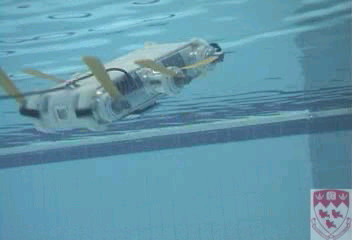
I love the videos of the RHex robot swimming. That's the kind of thing that would get me excited about telepresence.
Besides crawling and swimming, Caleb told me that at TedMed Robert Full showed a video of RHex walking upright, on two legs. If you think that's cute, take a look at it pronking.
Apparently Robert Full focuses quite a bit on the mechanics of locomotion as opposed to the control aspects; Leg & joint stiffness, etc. The approach seems to be working.
June 16, 2003
The Road to Lisp
You may be interested in taking or reading the responses to the Road to Lisp survey.
Carl's visiting from Chicago, which is a factor in the lack of posts recently.
June 10, 2003
John Cage's Williams Mix
I don't really know the historical context, but I feel safe in assuming it was relatively mind-blowing for 1951. From http://sfsound.org/tape/CageAustin.html:
The process of creating the original realization of Williams Mix, as Cage explained, involved the precise cutting/splicing of recorded sounds to create eight separate reel-to-reel, monaural, 15-ips magnetic tape masters for the 4-minute 15-second, octophonic tape piece. The 192-page score is, as Cage referred to it, a kind of “dressmaker's pattern--it literally shows where the tape shall be cut, and you lay the tape on the score itself.”
I think you have to have done something really right to get a minute and a half of sustained bravos and boos from an audience of music critics and academics.
June 08, 2003
Clump
Miles Egan has started Clump, a mailing list for discussion of lisp application development (as opposed to compiler and tool development).
What's on-topic for clump?
Clump focuses on pragmatic issues of concrete development projects. Good topics might include:
- A module API for a CL web server.
- An interactive web interface for a CL package archive.
- A new blog server and client libraries.
- An iCal compliant calendaring server.
- An embeddable XML parser and XML-RPC implementation.
June 06, 2003
iRobot Funding
iRobot received $13 million in funding.
The company said it plans to use its money to increase production of military robots, which are used for things like reconnaissance and bomb disposal. iRobot will also ramp up production of its Roomba commercial vacuum cleaner, which has recently expanded distribution to Minneapolis-based discount retailer Target Corp.
[...]
iRobot is profitable, Clear said, and took in between $10 million to $20 million in revenue in its 2002 fiscal year.
For 2003, the company is on track to reach between $30 and $50 million in revenue, he said.
June 04, 2003
Exhaustion
Phew, I can finally slow down a little. Jennie and Chris visited me this weekend, and I kept them to a brutal schedule of socializing, drinking, napping and rocking.
Which included a trip to the ocean, of course. We are from Chicago, after all.
And a BBQ at Ann's.
And seeing The Haunted at the Troubador with Mark.
And seeing Sarah Silverman laughing with some friends, 10 feet away from us, at the Jimmy Kimmel show (it's possible nobody else was excited about this other than me).

we're earthlings, we should blow up earth things
And The Standard downtown, where the rooftop bar has waterbed-equipped pods and a glass of Maker's is $11.
And a great Dodger's game with Jennifer.
It's too bad they left today, because that was just great.
A Sign of Good Taste
Dan Moniz found this job posting for a C++ coder with lisp/scheme skills.
It reminds me of when I was at Neodesic, and even the postings we'd put up for Visual Basic programmers would mention lisp, just on the off chance it would catch the eye of someone interesting.
June 03, 2003
Jordan Katz
Jordan Katz is a high school senior with a new weblog on the “Semantic Web, Lisp, music and general sintafulation. ” Go read it now.

